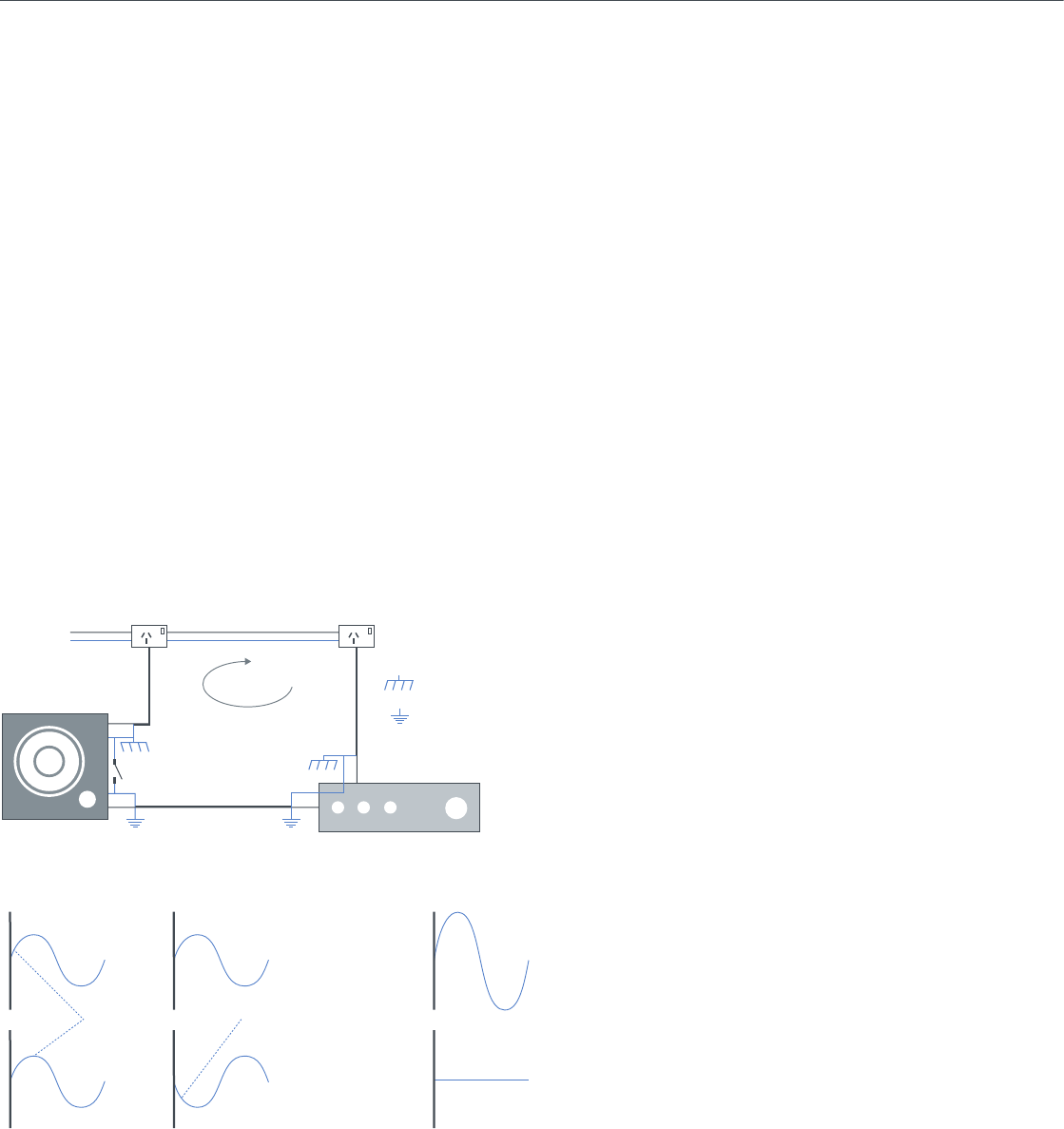
+
+
= =
= =
2
1
0
-1
-2
2
1
0
-1
-2
2
1
0
-1
-2
2
1
0
-1
-2
2
1
0
-1
-2
2
1
0
-1
-2
Earth Lift
The EarthLift button ensures the Seismix
can be connected to a wide range of stereo
ampliers / AV receivers. Should a humming
noise be evident when the Seismix is connected,
push the EarthLift button (see gure 1) which
interrupts the current that may be circulating from
the subwoofer’s signal ground through the mains
earth wiring (see gure 4). Note: The EarthLift
button does not break the mains earth connection
to the subwoofer, only the connection between
the subwoofer’s signal ground and the mains
earth. To guard against electric shock NEVER
disconnect the mains earth from any appliance.
Low Pass (Hz)
The LowPass control (see gure 1) adjusts
the total bass content from the Seismix. This
control allows you to adjust the upper limit of the
Seismix’s frequency range between 60 –150 Hz.
The higher the selection, the broader the range
of bass information heard. This setting can be
adjusted for personal taste and integration with
your main speakers.
Hi / Lo Gain
The Hi/LoGain button (see gure 1) is
positioned below the blue Power / Standby
LED, this button allows you to increase or
decrease the sensitivity of the subwoofer
without adjusting other settings. In the ’Lo’
gain position, a much higher input signal is
required, and you will need to increase the
main volume control to reach maximum output.
In the ’Hi’ gain position the output of the
subwoofer is increased by approximately 20dB,
requiring a lower input signal, meaning you will
not need to increase the main volume control
to achieve the same amount of output.
Phase
Signal phase can be left at '0°', or shifted
180° (inverted), by pressing the Phase button
(see gure 1). This applies to the output of
the subwoofer compared to its input.
To get the most from all of your speakers they
must be operating in Phase. That is the signals
must all be positive going or negative going
simultaneously. If this is not the case and one
signal is positive going and the other is negative
going the result will be a cancellation of signal
and the sound at those particular frequencies
will be perceived as quite 'empty' sounding
and lacking potential impact.
The setting of the Phase button (ie. 0° or
180°) and the resulting sound is dependant
on where the subwoofer is positioned in
relation to the main speakers. The best way
to nd the correct setting is through trial and
error during set up by comparative listening
tests. In most cases the effect will be subtle
and there won't be a complete lack of bass.
If no difference can be heard, the position
of the button is not crucial.
The effect of phase can best be shown with
the representation of a sine wave (see gure
5). The effect shown in the lower diagram is
with the signals 'out of phase' and this can be
rectied by changing the position of the Phase
button. This will invert the negative going
signal and the result will be the same as
the rst, 'In Phase', example.
Line Level Inputs
Line level inputs (see gure 1 or 2) need to
be connected to the ‘PRE OUT’ or 'SUB OUT’
from your stereo amplier / AV receiver.
The line level stereo input performs a summing
function adding the left and right signals where
applicable, to give a mono (L+R) signal. This
mono signal is ltered and then amplied
before being sent to the subwoofer driver.
Speaker Level Inputs
The speaker level stereo inputs combine
the signal going to the main left and right
speakers providing a mono (L+R) signal to
the subwoofer driver. This mono signal is
ltered and then amplied in the same
way as the line level input signal before being
sent to the loudspeaker. Two pairs of terminals
are provided so that the speaker level signals
can “pass through” the subwoofer on the way
to the main speakers (see gure 1 or 3).
Figure 4 Earth lift button
Mains power outlets
Subwoofer
Signal connection
Earth lift button
Circulating ground currents
Denotes signal ground
Denotes chassis Earth
Receiver / Amplier
Figure 5 Phase
Positive going
(No output)
180° out
of phase
Negative going
In Phase










